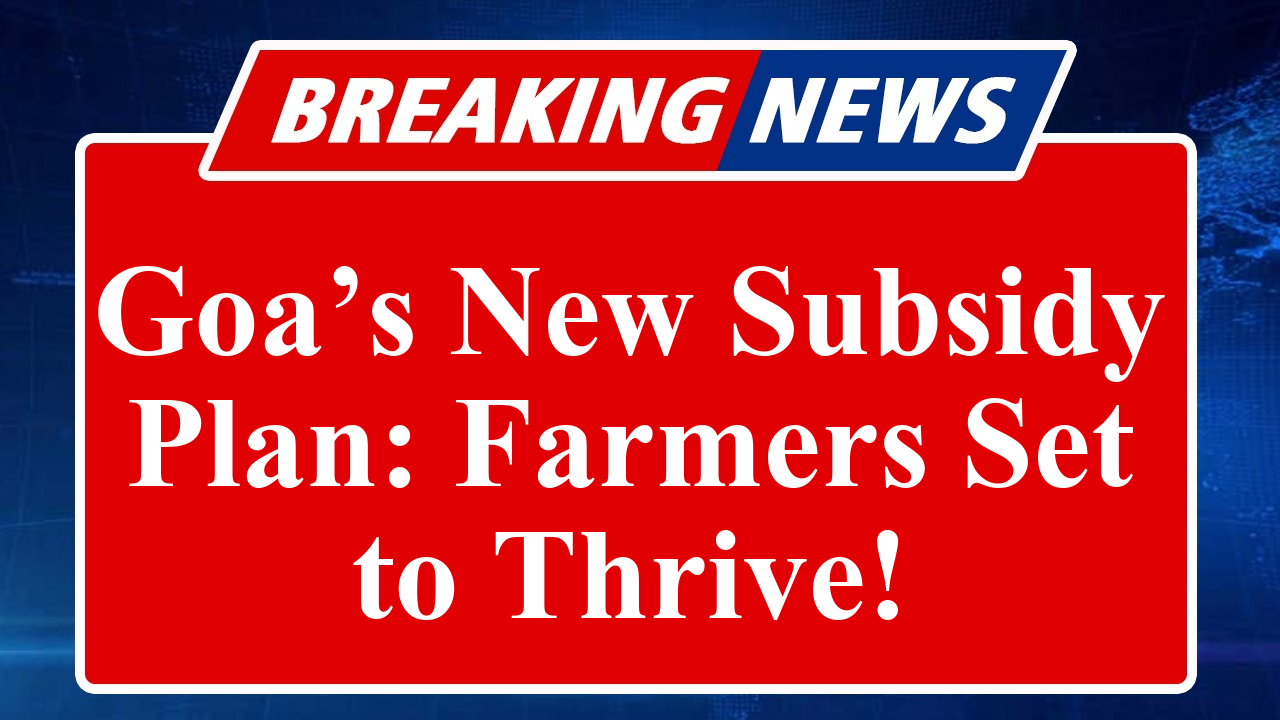“Goa’s government has launched a new agri-subsidy scheme to empower farmers with financial aid, modern equipment, and sustainable practices. Aimed at boosting productivity and income, the initiative includes direct subsidies, low-interest loans, and organic farming support, addressing challenges like rising costs and climate change. The plan has sparked optimism but faces scrutiny over implementation and reach.”
Goa Unveils Farmer-Centric Agri-Subsidy Scheme
The Goa government has rolled out a comprehensive agricultural subsidy scheme designed to uplift farmers and transform the state’s agrarian landscape. Announced on July 3, 2025, the initiative targets small and marginal farmers, offering financial assistance, access to modern technology, and incentives for sustainable farming practices. With agriculture forming the backbone of Goa’s rural economy, the scheme aims to address pressing challenges such as rising input costs, climate variability, and market access.
Under the new plan, farmers will receive direct benefit transfers (DBT) for subsidies, bypassing intermediaries to ensure transparency. The scheme allocates ₹50 crore for the fiscal year 2025-26, with provisions for subsidizing seeds, fertilizers, and irrigation equipment. A key highlight is the 50% subsidy on micro-irrigation systems and farm machinery, including tractors and harvesters, to enhance productivity. The government has also introduced low-interest loans through tie-ups with banks like Karur Vysya Bank, offering credit at 4% per annum under the Kisan Credit Card (KCC) scheme, with an additional 3% incentive for timely repayment.
Organic farming is a cornerstone of the initiative, with ₹10 crore earmarked for promoting chemical-free agriculture. The scheme provides training and certification support for farmers transitioning to organic practices, responding to growing consumer demand for naturally grown produce. This aligns with remarks by Koppal’s Deputy Commissioner Nalini Atul, who emphasized organic farming’s profitability and environmental benefits. Additionally, the state is expanding horticulture, targeting 5,000 hectares for fruit and vegetable cultivation to diversify income sources.
The scheme also integrates technology, offering subsidies for AI-based tools, remote sensing, and GIS for precision farming. These measures aim to optimize resource use and mitigate climate risks, with Goa’s agriculture department projecting a 20% increase in crop yields by 2027. The plan builds on national schemes like the Rashtriya Krishi Vikas Yojana (RKVY) and PM-KISAN, which have disbursed ₹3.7 lakh crore to 110 million farmers nationwide since 2019.
However, challenges remain. Critics, including opposition leaders, argue that implementation hurdles, such as delayed disbursements and bureaucratic red tape, could undermine the scheme’s impact. Recent reports highlight similar issues in Maharashtra, where farmers faced non-payment under the Minimum Support Price (MSP) scheme. In Goa, stakeholders have called for robust monitoring to ensure funds reach the intended beneficiaries. The state has promised a digital platform for real-time tracking of subsidy applications, inspired by the success of direct subsidy models in the United States, as noted by Vice President Jagdeep Dhankhar.
Farmer unions have welcomed the scheme but urged the government to address input costs, particularly fertilizers, given India’s 80% reliance on Chinese imports. Supply disruptions have driven up prices, squeezing margins. The Goa government plans to collaborate with local cooperatives to secure affordable inputs and explore alternatives like nano-fertilizers, as recommended by a parliamentary committee in March 2025.
The scheme’s rollout coincides with broader national efforts to bolster agriculture. India’s agricultural budget has surged five-fold over the past 11 years, with ₹1.71 lakh crore allocated for fertilizer subsidies in 2025-26. Goa’s initiative, however, is tailored to its unique needs, focusing on small landholdings and tourism-driven markets. With 70% of Goa’s farmers classified as small or marginal, the scheme’s success hinges on effective outreach and timely execution.
Disclaimer: This article is based on recent news reports, government announcements, and agricultural policy updates as of July 4, 2025. Information is sourced from credible outlets like The Hindu, The Economic Times, and Moneycontrol. Readers are advised to verify details with official government sources for the latest updates.

